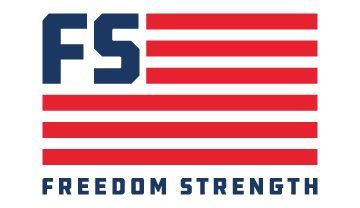Initially is the short answer. The longer answer is a bit nuanced. We find that our clients following a linear strength barbell progression may be sore in the initially, but the soreness goes way after the first week or two. Now let me explain in more detail. When I say “sore”, I mean you’ve worked out so hard that you now have DOMS, or Delayed Onset Muscle Soreness. DOMS is caused by an eccentric contraction of muscles (i.e. the muscle in “lengthening”). The great thing about the 4 primary lifts, is that they are PRIMARILY using either isometric, or concentric contractions which don’t cause DOMS. You feel fatigue after training barbells, but you generally don’t feel General How-To’s and Tips: Here is a great video How to Film Your Barbell Lifts from The Strength Co. Make sure you use a quality tripod that’s adjustable to chest or head height. The Squat: Film the squat from a rear quarter with the camera about chest height. Make sure you frame the entire body when standing straight up. Also, don’t forget to trim the footage to start right before the lift begins and end after the lift is complete. The Deadlift: Film the deadlift from the front quarter with the camera about hip or chest height. The frame of the picture should include your entire body when standing tall. Also, don’t forget to trim the footage to start right before the lift begins and end after the lift is complete. The Press: Film the press from either a side profile, or a rear quarter with the camera about chest height. The frame should include your feet and the top of the barbell and plates when fully locked out at the top of the movement. Also, don’t forget to trim the footage to start right before the lift begins and end after the lift is complete. The Bench Press: Film the bench press from a high front quarter looking down on the lifter. The frame should include your feet and well as the entire width of the bar at lockout. Also, don’t forget to trim the footage to start right before the lift begins and end after the lift is complete. Several options are available to get you started. If you’re a DIY kind of person you might start with your Learn resource page. We also have a great Playlist on YouTube you can checkout. If you’re ready for coaching see our Coaching page or complete and submit our New Client Questionnaire. For cardio and conditioning we recommend walking, rowing, sled work, or running depending on your preferences. The amount of conditioning will depend on your goals and your nutrition plan. This depends on many factors including: your previous strength training history, your diet and nutrition, your training frequency, the program you’re following, the quality of your sleep, etc. However, if you follow our program you can expect to increase muscle mass over time, while at the same time re-compositioning your body, and likely losing weight if you’re relatively undertrained and overweight. The four lifts we start with (squat, deadlift, bench, overhead press) are the main lifts that recruit the largest number of muscles, over the longest effective range of motion while moving the most amount of weight. The absolute best method for increasing strength and gaining muscle mass is to lift heavy using barbells and compound movements. “Lifting heavy” does NOT mean you start out lifting heavy weights, it simply means you add weight each time you lift in a linear weight progression. This depends on your personal circumstances. You should make sure your primary care physician has cleared you to “resistance train” and you don’t have any injuries or medical conditions that would prevent you from training safely. No, you’re not. Not if you’ve been cleared to exercise or resistance train from a Doctor. If you have doubts about that I present to you John Claassen. John was in his mid-80s when he started his strength training journey. See him deadlift 235 lbs at 92 years old in this YouTube video from Greysteel Strength and Conditioning. Here’s a more detailed documentary of John’s strength training journey. Everyone. Being a stronger version of yourself is never a bad thing. Exercise and training are often used interchangeably, but they have some key differences. Exercise is any physical activity done for the sake of maintaining, or improving physical fitness. Examples include walking, running, swimming, cycling, rowing, etc. Training, on the other hand, involves following a more structured program that is more goal oriented often with the purpose of increasing performance of a specific sport or activity. Increasing strength and lean muscle mass over time using a barbell program is a great example of “training”. Your strength, more than anything, will determine both the quality of your life as well as how long you live. Being strong can help reduce injury, increase bone density, improve balance, help with weight loss, and improve your body composition.
